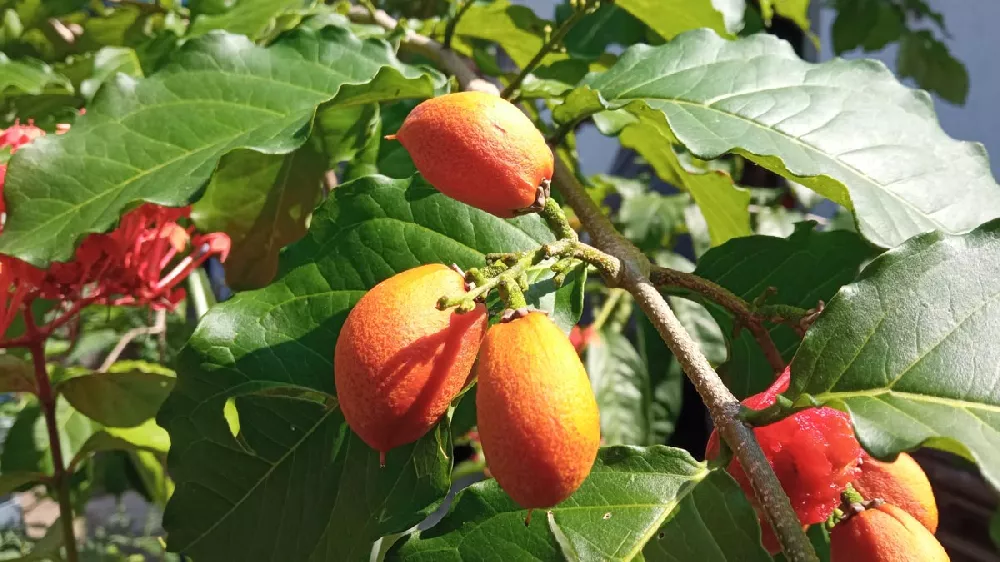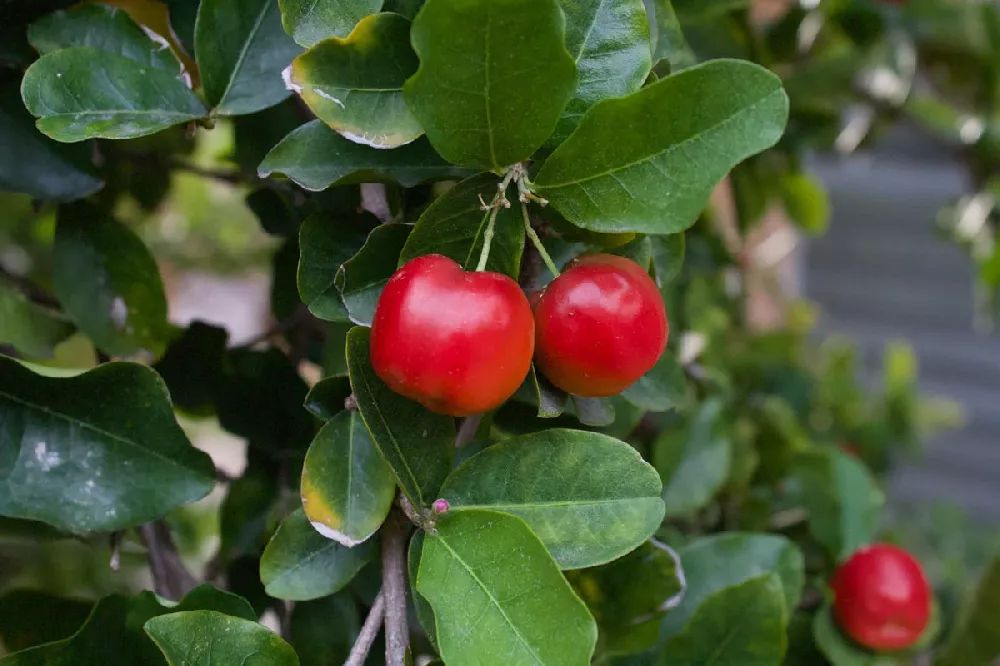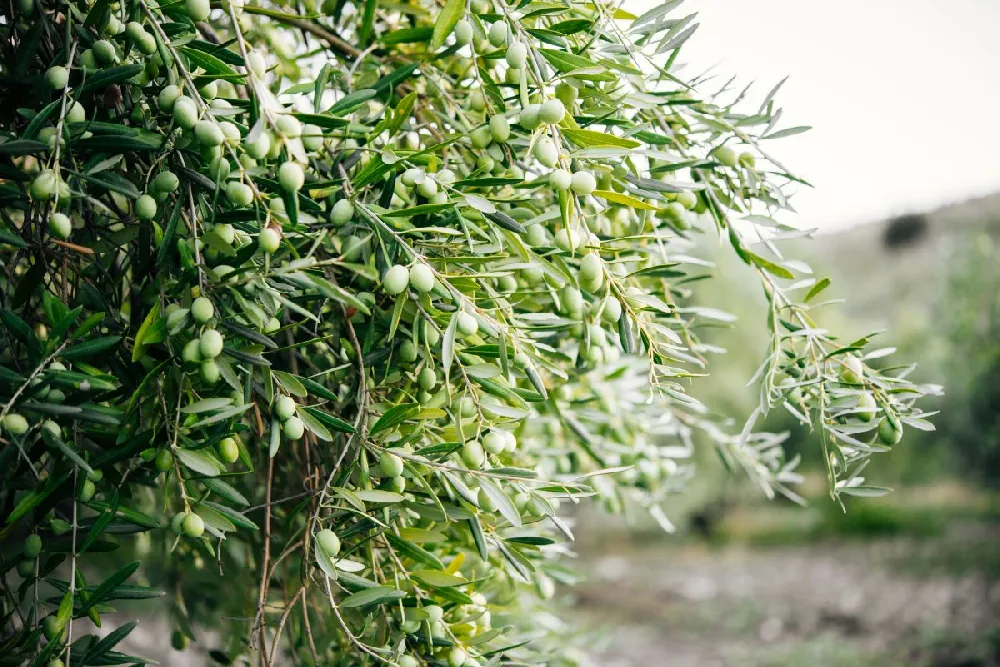- Home >
- Edible Plants >
- Peanut Butter Tree
Peanut Butter Tree for Sale - Buying & Growing Guide
It is difficult to imagine a tree that produces fruits with a taste similar to peanut butter. However, the aptly-named peanut butter tree does just that. This heat-loving species, Bunchosia argentea, has oval-shaped fruits with flesh that shares a similar texture and flavor to the peanut butter so many people typically buy in jars. This plant also has large and lovely leaves and a set of flowers sure to catch your eye as you wait for the fruits to arrive. Here are some noteworthy features of the peanut butter tree:
- Develops unique tropical fruits that taste a lot like peanut butter.
- Attractive broad leaves and bright flowers.
- Can grow large enough to provide some shade in outdoor locations.
Enter your zip code to find nearby stores that may carry this plant.
Plant Care
Sunlight

Grow this plant in full sunlight or in a partial shade setting.
Watering
Water regularly during and after establishment to maintain consistent soil moisture.
Fertilizing

Use a nitrogen-rich fertilizer about three times per growing season..
Planting and Care
Planting instructions
Unless you live in the southernmost part of Florida or California, you won’t have a chance to grow a peanut butter tree outdoors. These trees need hot temperatures year-round, and if your location does not provide them, plant your tree in a container so that you can overwinter it or grow it indoors exclusively. To do this, select a relatively large container so that the roots of your peanut tree have plenty of room to expand over the coming years.
Watering and nutrients
Peanut butter trees need a lot of soil moisture to stay alive both when the tree is first establishing itself in a new growing location and when it is already mature. Your watering goal should be to keep the soil moist at all times. Give your peanut butter tree fertilizer about three times during the growing season. Nitrogen-rich fertilizers often work best, but there are peanut butter tree-specific fertilizers that will work too.
Pollination
Pollination is a necessity if you wish to produce the fruits for which the peanut butter tree is so famous. These trees are self-fertile; you need only one to produce fruit, and they bloom in the spring months. Insects are potential pollinators for this species. However, since most gardeners must grow this plant indoors for significant portions of the year, hand pollination is one of the most reliable options. Successful hand pollination often involves using a brush to move pollen from the male reproductive structures to the female parts of the flowers.
Pruning
Prune your peanut butter tree in the winter for the best outcome, keeping several goals in mind. Some gardeners use their pruning to maintain the size of their plants. Others will prune to make it easier to harvest the fruits that will come later in the year by cutting the central leader. Peanut butter trees can also develop a dense canopy, so thinning branches can be an excellent way to maintain air circulation through the foliage.
Pests, diseases, and animals
These plants have great disease and pest resistance. You likely won’t encounter any issues on those fronts if you care for your tree the right way and use sterile tools any time that you prune. Still, there is some possibility that complications can arise. For example, aphids may infest your peanut butter plant. Likewise, there are a few fungal diseases that may present a problem.
Harvesting
After the flowers bloom in early spring and experience successful pollination, they will begin to transform into the fruits that you’re likely looking forward to. These fruits will first appear small and green. Throughout the season, the fruits will change in color to light orange, then dark red. When the fruit has reached this hue, it is ripe and ready for you to pick. It takes just a few months before you can enjoy your peanut butter tree fruits.
Achieving maximum results
Peanut butter trees have little to no drought tolerance at all, so you need to be sure that you keep the soil moist at all times. The soil should also have a pH that is slightly acidic to slightly alkaline. If you’re struggling to find a fertilizer that you think would work well for the peanut butter tree, you can always try using a product that is intended for citrus plants or other tropical plants, as these should supply the key nutrients that your peanut butter tree needs to grow a healthy harvest.
FAQs
Where does the peanut butter tree come from?
The peanut butter tree comes from areas of Central America and South America, which explains why it cannot survive outdoors in most U.S. locations. In that native range, the weather is consistently hot and moist enough to give the tree the conditions it needs for success. If you are growing this plant outside of those natural regions, you will need to mimic the conditions present where the peanut butter tree calls home.
How long does it take for a peanut butter tree to bear fruit?
A brand new peanut butter tree needs at least two years to grow before it reaches a mature enough age to begin growing flowers and fruits. Be patient during these first years and continue giving your peanut butter tree the best possible care. Once your tree is old enough, it will begin showing flowers in the spring that will quickly lead to the clusters of fruits that you've worked so hard to produce.
How large are peanut butter trees when mature?
Peanut butter trees have a moderate height of about 10 to 15 feet and a spread that matches those dimensions. Those growing these plants in containers cannot expect them to get that large. On the other hand, if you grow this plant outdoors, you may find that it is large enough to give you some much-needed shade during the hottest months of the year.
Compare Similar Products
You can't add more Product Name - Product size to the cart.
OK









